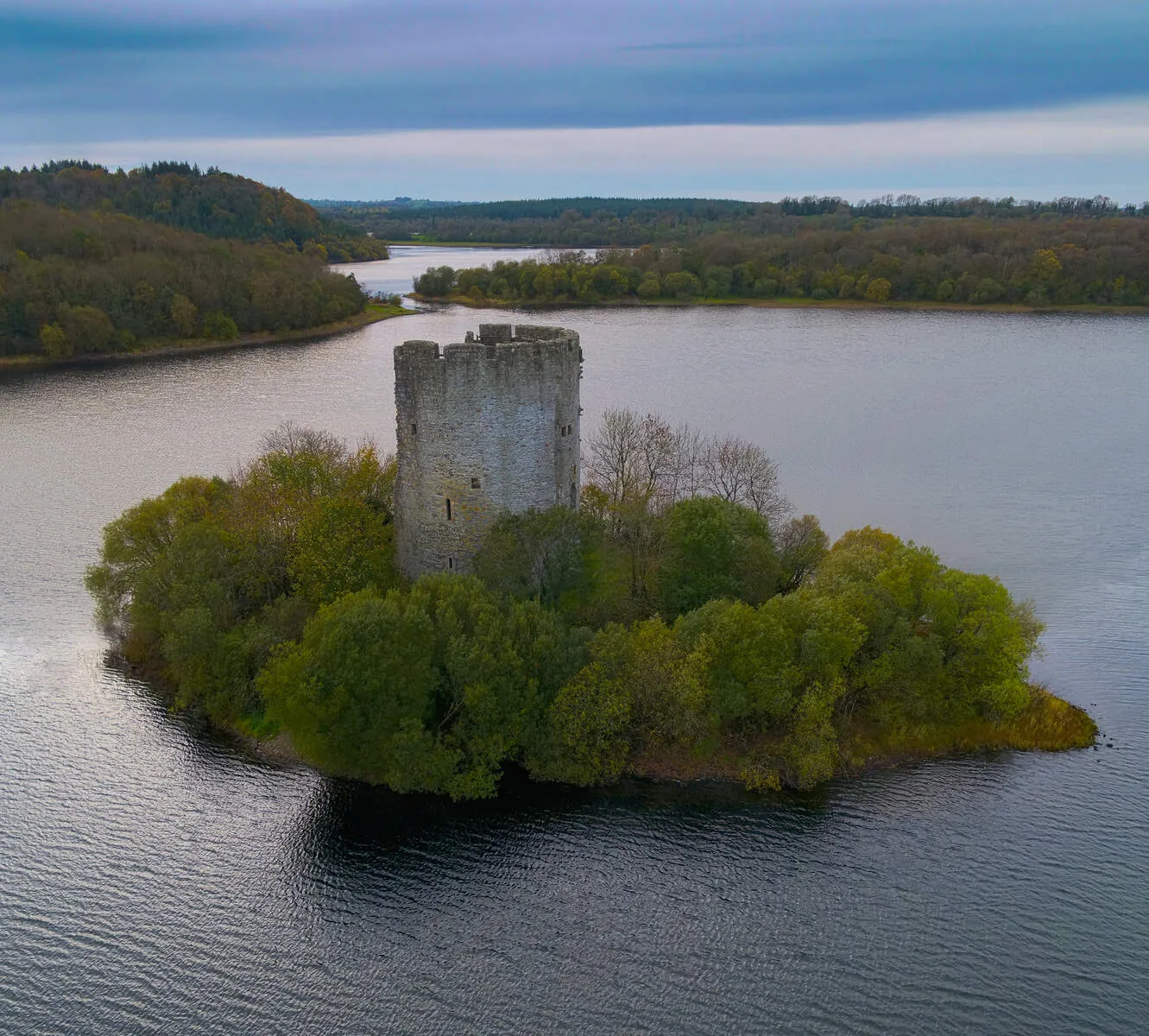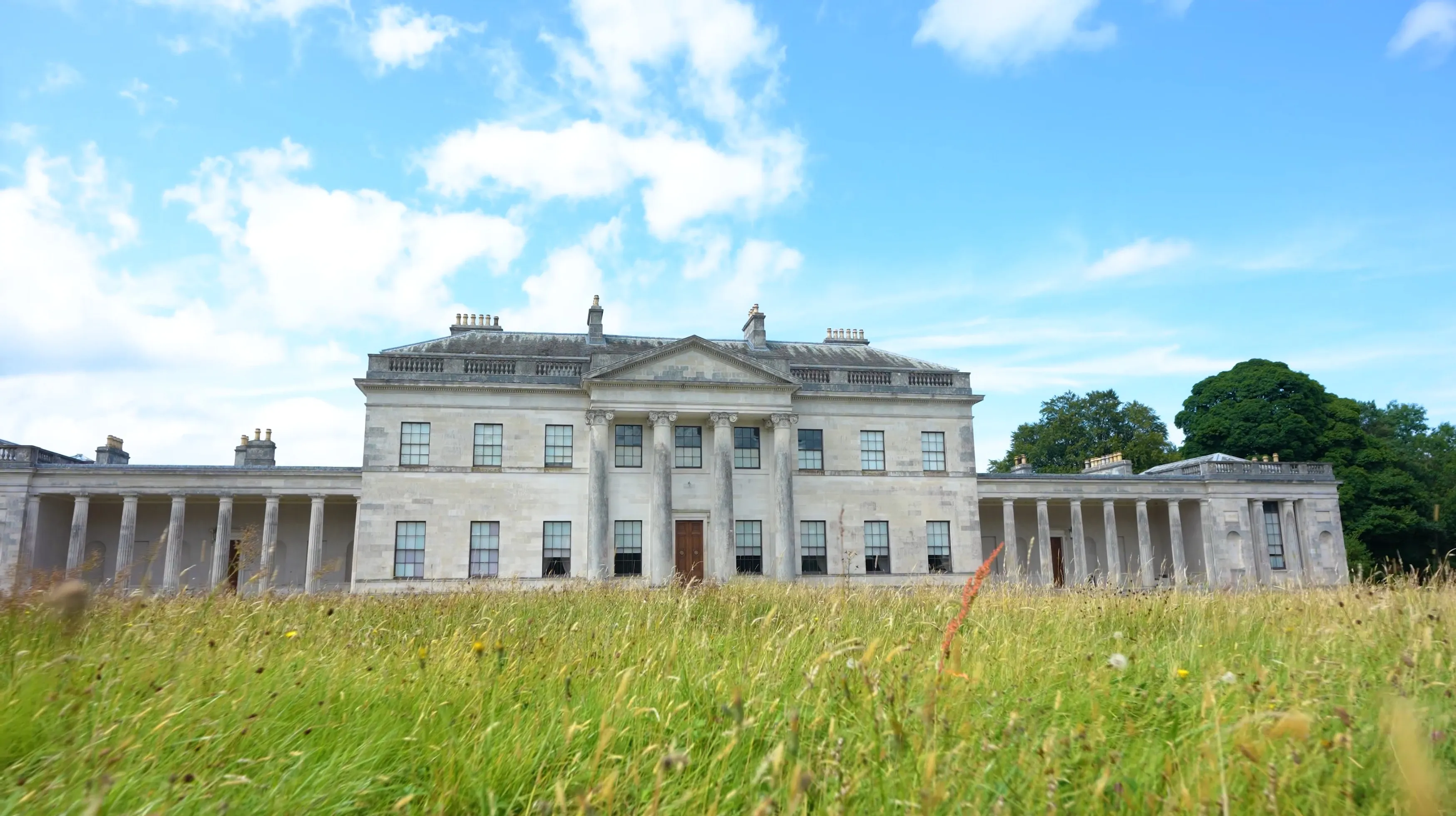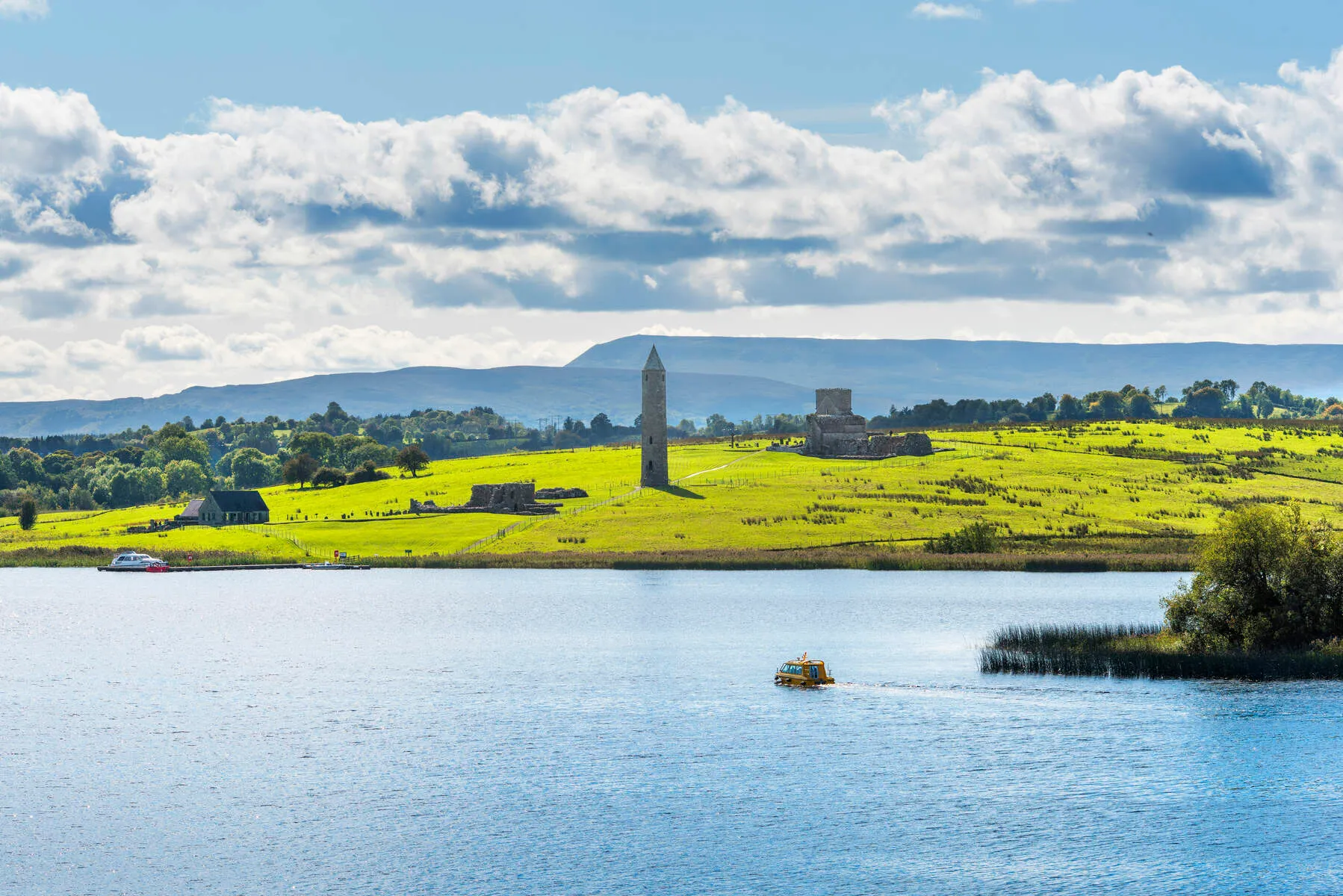On the shores of Upper Lough Erne in County Fermanagh, Crom Estate is a vast 2,000-acre haven of ancient woods, wetlands, and history, looked after by the National Trust. It's incredibly important for nature conservation in Ireland, protecting a rich variety of life. The estate boasts the largest remaining area of native oak woodland in Northern Ireland, along with reed-fringed lakes and wildflower meadows. These habitats support rare plants like the blue-eyed grass (found only in Fermanagh!) and eight different types of native bats. Keep an eye out too for pine martens, red squirrels, and shy otters – Crom is a vital refuge for these creatures.
Crom's history is tied up with the Plantation of Ulster. You can still see the ruins of Old Crom Castle, a 17th-century tower house that survived sieges before burning down in 1764. Later additions were made just to make the ruins look more romantic! Nearby stands the grander Crom Castle, a 19th-century Tudor-style building designed by Edward Blore. It's still privately owned by the Crichton family (so not open to visitors) but has been used as a filming location for period dramas like the BBC's Blandings. The whole landscape was carefully shaped by designer W.S. Gilpin in the 1800s to enhance its natural beauty.
Visitors can explore over 10.5km of recently improved trails that wind through ancient yew groves. Don't miss the estate's most famous feature: two enormous yew trees, joined together and over 800 years old – counted among Britain's greatest trees! The paths lead to viewpoints over Lough Erne, where you might spot herons among the reeds. There's a bird hide with binoculars for watching waterfowl. You can also rent boats or canoes to explore the lough's quiet inlets, or join guided walks to learn about the castle's history, including its time as a US military base during World War II.
For a break, there's a historic walled garden and tea rooms. If you want to stay longer, glamping pods and cottages are available. Spring (for wildflowers) and autumn (for colourful leaves) are particularly beautiful times to visit, but Crom is open year-round, with winter offering a peaceful, stark beauty. The combination of those ancient yew trees, the deep history, and the thriving wildlife makes Crom Estate a truly special place to explore.
Getting There
By Bus: Ulsterbus offers services from Belfast to Enniskillen (the county town), a 1.5-hour, 90-mile journey. From Enniskillen, Crom Estate is a 15-mile drive via minor roads through scenic countryside. Public buses beyond Enniskillen are infrequent, so renting a car or booking a taxi from Enniskillen is recommended.
Driving Directions:
- From Belfast, take the A4 or A5 toward Enniskillen, then follow signs to Crom Estate from the town. Total journey time is roughly 2 hours.
- From Dublin (not mentioned in sources but a common starting point), take the M1 motorway to the border, then follow the A4 toward Enniskillen and Crom Estate, a journey of about 3.5 hours.
Parking
Crom Estate offers free on-site parking for cars, coaches, buses, minibuses, and motorbikes, providing ample space for all visitors. The parking area is a short walk from the estate entrance, making it convenient for exploring the trails.
Accessibility: Disabled parking spots are available to ensure ease of access for all visitors.
Nearby Attractions

Clough Oughter Castle
Sitting alone on a small, man-made island in Lough Oughter, County Cavan, Clough Oughter Castle is an unforgettable sight from Ireland's medieval past. This round tower, built in the early 13th centur...
Distance: 16.6 km

Castle Coole Estate
Castle Coole is a stunning example of 18th-century neo-classical style, located in the rolling Fermanagh countryside in Northern Ireland. Built for the first Earl of Belmore and finished in 1798, arch...
Distance: 20.6 km

Devenish Island
Sitting peacefully in Lower Lough Erne, Devenish Island is one of Ireland's most important and best-preserved early Christian sites. It was founded back in the 6th century by St. Molaise, a figure sur...
Distance: 25.2 km
